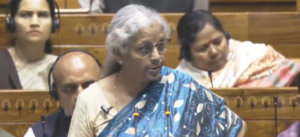[This is an edited version of the article. The full article is available at: The Next Recession, https://thenextrecession.wordpress.com.]
The news that a COVID-19 vaccine could well be available by the start of 2021 sent the stock markets of the world shooting up to new record levels. However, the rally was quickly tempered by the rocketing rise in COVID-19 infections as the northern hemisphere enters its winter. The rise is most heavily exhibited in the U.S. and most parts of Europe. The death rate from these new infections may be lower than in the first wave last March-April, but hospitalisations are reaching new peaks in the U.S. and parts of Europe.
This is serious for health outcomes because hospital capacity was already low in many countries, after privatisations, public sector spending cuts and outsourcing of health services conducted by most advanced capitalist governments over the last 30 years before the pandemic. India is at the bottom of the pile for hospital beds per 1000 inhabitants, not surprisingly, but among ‘developed economies’, Sweden, the UK, Canada, New Zealand and Denmark are also near the bottom, with the U.S. not much better.
In this new ‘winter wave’, health systems are better prepared and resourced but even so, patient numbers are rising fast. And now many hospital staff have been infected and forced to self-isolate, reducing the ability of health systems to cope with the winter wave of COVID-19. This is forcing many governments in Europe and states in the U.S. to resume new lockdowns of varying severity. At the same time, people are voting with their feet and millions are staying at home, not traveling, or shopping and working on-line, and not going to cafes, restaurants, etc. This combination of lockdowns and self-isolation has stopped the nascent recovery in economic activity that began in the summer. Economic activity, as measured by mobility and spending trends, is dropping back in the major economies of the northern hemisphere.
Covid is likely to get worse before it gets better. Daily infection rates, hospitalisation and positive testing all point in this direction. The vaccination story provides no palliative for this in the next six months.
The hopes of further economic recovery in the last quarter of this year and next are being dashed. The European Commission has lowered its Eurozone 2021 GDP forecast to +4.2% from +6.1%. The Commission cut the GDP forecast because of the new wave in COVID-19 and the return of lockdowns. It’s a similar message for the U.S. Oxford Economics reckons that the ‘recovery’ is plateauing and even with a vaccine, there is no prospect of the U.S. economy returning to its pre-virus GDP path (weak as that was) for the foreseeable future!
And that is even taking into account any future policy measures by the new Biden administration to ‘stimulate’ the economy through more government spending.
The stalled ‘recovery’, such as it was, is going to leave permanent scars on the ‘labour market’ (ie people’s livelihoods). The latest U.S. jobs figures for October suggest that the return to work for millions has begun to fade. By last April, 22m Americans had lost their jobs or been laid off. So far, less than half of them have returned to those jobs.
The rest remain on unemployment benefit and/or emergency assistance.
The number of unemployed actually understates the problem as millions of individuals have left the labour force. Many rejoined over the summer, but the total potential labour force is still more than four million workers smaller than it was prior to the crisis, and it contracted in September, a disturbing stall in momentum.
In 2021, wage growth will slow, high unemployment will remain and inflation will pick up. It’s three-way hit to living standards for the average American family and that story applies to Europe as well.
But what about the billions who live in the so-called ‘developing economies’ of the so-called Global South? Many of these countries have been even more badly hit by the COVID-19 pandemic. Countries in Latin America lead in COVID death rates (Peru, Bolivia, Ecuador, Brazil, Argentina, Mexico), because their mainly privatised health systems cannot cope and because millions there on casual labour have been forced to go to work, if they can, to survive. Only a relatively younger population and more dispersal geographically (as in India, South Africa etc) has kept mortality rates down.
But there has been no escape economically. The economies of the global south have been trounced by the COVID pandemic as international trade closed down (-10%) and domestic economic activity collapsed. For the first time in records, the so-called emerging economies combined will suffer a contraction in real GDP, and that average includes giant China where success in dealing with COVID has meant that China is one of the few countries that will grow in 2020 (if only by about 1.5%). Among the worst hit are supposedly dynamic emerging capitalist economies like India (-10%), Brazil (-6%), Mexico (-9%), South Africa (-9%).
Inevitably this is leading to defaults by various national governments on the debts owed to private sector creditors (banks, hedge funds etc). Only this week, Zambia is expected to default on its payments, thus joining a long list of past defaulters in ‘emerging economies’.It’s a debt disaster, no longer waiting to happen, but already here.
This disaster will reverse what little progress has been made in reducing world poverty, where near 4bn people live on less than $5 a day (a more realistic threshold for poverty than that of the World Bank).
And now we have the shocking report just issued by UNICEF. UNICEF reckons that approximately 150 million additional children are living in multidimensional poverty–without access to these essential services–due to the COVID-19 pandemic.
At least a third of the world’s schoolchildren–463 million children globally–were unable to access remote learning when COVID-19 shuttered their schools. Schoolchildren in the poorest countries have already lost nearly four months of schooling since the start of the pandemic, compared to six weeks in high-income countries.
Even short disruptions in children’s schooling can have long-lasting negative impacts due to factors including the lack of structured programmes for catching up. In the past, school closures have led to an increase in child marriage and child labour which often prevent children from continuing their education.
According to a study covering 118 low- and middle-income countries by the Johns Hopkins Bloomberg School of Public Health, an additional 1.2 million under-five deaths could occur in just six months due to reductions in routine health service coverage levels and an increase in child wasting. As many as 132 million people may go hungry in 2020, of that 36 million are children. And 370 million children may miss out on nutritious school meals. The nightmare of global capitalism that billions in the ‘developing countries’ already suffer is going to be intensified for years ahead.
But wait, what about the vaccine–is it not arriving as a white knight to save the world, or like a silver bullet to kill the disease of the ‘vampire’ bats? History is littered with vaccines that once introduced had to be withdrawn because they failed–and, more often than not, did harm. Vaccines are more likely to fail if they are developed under great pressure from government and the populace with trials and approvals being expedited in the name of expediency. In the development of COVID-19 vaccines it is noteworthy that so much of the testing is being done in poor countries where ‘life is cheap’. Moreover, much of the original science was done by publicly-funded institutes, but it is governments that will pay millions in exorbitant prices being charged by big pharma for the vaccines.
And even if a successful vaccine is developed with a significantly high efficacy rate, it is going to take several months, maybe even 1-2 years, to ramp up production to the required levels.
And of course, there is also the question of how long it is effective for. Current indications for most of the front-runner vaccines under development is for them to last for one to two years.
There is another the big problem. COVID-19 emerged, like other new pathogens for which human beings had no immunity from their transfer from wild animals in remote parts of the world through to animals being ‘industrially farmed’ and food markets into humans. There are many other pathogens out there still, with nothing being done to stop the transfer mechanism because nothing is being to done to curb or stop fossil fuel explorations, logging, deforestation for plantations and livestock, all in the drive for more profit for agro and energy industries.
Moreover, just as worrying is that it seems these viruses can mutate as humans infect animals in a vicious cycle, leading to further infections in humans that the current vaccines cannot be effective against. The shocking example of the Danish mink industry confirms this serious risk. It seems that caged minks (kept in tiny cages to be killed for the international fur trade) caught COVID-19 which then mutated into a variant of the virus, infecting fur farm workers. The government has been forced, in the teeth of opposition by fur farmers, to cull more than 15 million of the animals, due to fears that a COVID-19 mutation moving from minks to humans could jeopardise future vaccines.
So, as we head towards 2021, the pandemic infection rate shows no sign of stopping or even slowing. Hospitals in the northern hemisphere are under pressure and economic activity is dropping back. Employment levels are still down and real incomes are set to fall, especially for the lower paid as jobs disappear and inflation rises. For the billions in the ‘global south’ the spectre of poverty, illness and exploitation will be realised. The scarring is long term.
What can be done? Some have called for a ‘war economy’ where the state replaces the capitalist sector and directs and controls national and global resources towards people not profit. I prefer the term ‘social economy’.
This would mean:
- emergency action to provide funds for millions north and south who have lost their livelihoods; and immediate cancellation of the debts ‘owed’ by governments of the poor south;
- national and international plans through state projects to employ people, restore proper health and education systems free at the point of use and invest in industry, particularly ‘green’ industry;
- take the major financial institutions into public ownership and control, along with big pharma and other strategic companies in energy, food, manufacturing and communications and
- longer term, initiate state-led plans internationally coordinated to deliver social needs and environmentally harmonious results (ie stop deforestation and fossil fuel exploration etc) rather than expansion for private profit that will deliver yet more disasters.
Of course, nothing like this is set to happen in the near future, let alone 2021, and so we all roll on to more calamity.
(Michael Roberts works in the city of London as an economist.)




